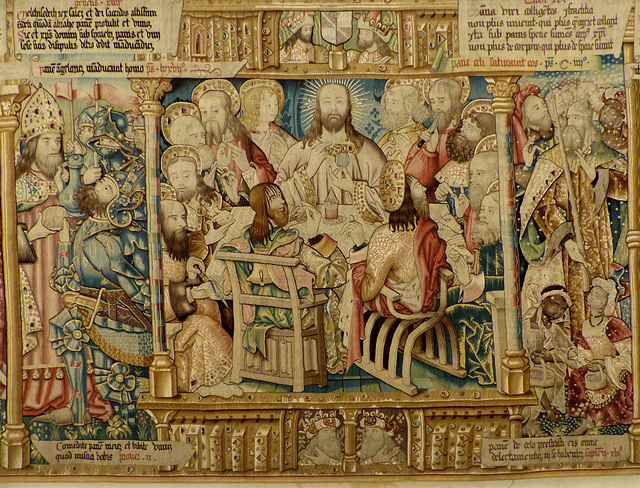La Chaise-Dieu
La Chaise-Dieu
La Chaise-Dieu
La Chaise-Dieu
La Chaise-Dieu
La Chaise-Dieu
La Chaise-Dieu
La Chaise-Dieu
La Chaise-Dieu
La Chaise-Dieu
La Chaise-Dieu
La Chaise-Dieu
La Chaise-Dieu
La Chaise-Dieu
La Chaise-Dieu
La Chaise-Dieu
La Chaise-Dieu
La Chaise-Dieu
La Chaise-Dieu
La Chaise-Dieu
La Chaise-Dieu
La Chaise-Dieu
La Chaise-Dieu
La Chaise-Dieu
La Chaise-Dieu
La Chaise-Dieu
La Chaise-Dieu
La Chaise-Dieu
La Chaise-Dieu
La Chaise-Dieu
Location
Lat, Lng:
Lat, Lng:
You can copy the above to your favourite mapping app.
Address: unknown
Lat, Lng:
You can copy the above to your favourite mapping app.
Address: unknown
See also...
Keywords
Authorizations, license
-
Visible by: Everyone -
All rights reserved
-
124 visits
La Chaise-Dieu


La Chaise-Dieu was founded in 1043 by Robert de Turlande. It was named "Casa Dei", from which La Chaise-Dieu developed. From the 11th to the 13th century, the abbey experienced rapid and significant development. When the founder died in 1067, already 300 monks lived here. In the Auvergne La Chaise-Dieu gained importance similar to that of the Burgundian Cluny Abbey. The abbey received many donations from noble families and administered 42 daughter monasteries. Popes who visited the abbey include Urban II, Calixt II, Alexander III. and Innocent II. In 1342, Pierre Roger, who had lived as a monk in La Chaise-Dieu, became Pope in Avignon under the name Clement VI. He financed a new building of the abbey church, in which he was finally buried. The building was completed in 1378 under the pontificate of Gregory XI, a nephew of Clement VI.
Since 1516 La Chaise-Dieu, like most other French abbeys, became "in commendam" so the commendatory abbot drew the revenue of the monastery but without fulfilling the duties of the abbot or even residing at the monastery.
Calvinist troops looted the abbey in August 1562. After most of the monastery buildings were destroyed by fire in 1695, they were rebuilt by the monks in the decades that followed. In 1786, Cardinal de Rohan, who was involved in the "Affair of the Diamond Necklace" was exiled to La Chaise-Dieu. While the abbey had 40 monks at that time, religious life ended at the beginning of the French Revolution.
La Chaise-Dieu is known for the tapestries, once woven to embellish the monks´ choir.
They were commissioned by Jacques de Saint-Nectaire and were woven by a Flemish workshop between 1501 and 1518.
The collection includes 14 tapestries of which two are different and may have been ordered by the abbot for his personal use.
The 12 other tapestries constitute a complete continuation of the Annunciation to the Last Judgment. An inventory prior to the Revolution mentions 18 tapestries, so four tapestries have therefore disappeared.
The tapestries were only exhibited during major liturgical feasts. They were rolled up and kept during the troubles during the Wars of Religion and the Revolution.
In 2013 the tapestries were removed. They got restored and returned to the abbey in July 2019. I was lucky to see them in August 2019.
The "Last Supper". All apostles, but of course Judas, have precious halos, but of course Judas. One of the apostles cleans his teeth with his knife, while another cleans the knife with the table cloth.
Since 1516 La Chaise-Dieu, like most other French abbeys, became "in commendam" so the commendatory abbot drew the revenue of the monastery but without fulfilling the duties of the abbot or even residing at the monastery.
Calvinist troops looted the abbey in August 1562. After most of the monastery buildings were destroyed by fire in 1695, they were rebuilt by the monks in the decades that followed. In 1786, Cardinal de Rohan, who was involved in the "Affair of the Diamond Necklace" was exiled to La Chaise-Dieu. While the abbey had 40 monks at that time, religious life ended at the beginning of the French Revolution.
La Chaise-Dieu is known for the tapestries, once woven to embellish the monks´ choir.
They were commissioned by Jacques de Saint-Nectaire and were woven by a Flemish workshop between 1501 and 1518.
The collection includes 14 tapestries of which two are different and may have been ordered by the abbot for his personal use.
The 12 other tapestries constitute a complete continuation of the Annunciation to the Last Judgment. An inventory prior to the Revolution mentions 18 tapestries, so four tapestries have therefore disappeared.
The tapestries were only exhibited during major liturgical feasts. They were rolled up and kept during the troubles during the Wars of Religion and the Revolution.
In 2013 the tapestries were removed. They got restored and returned to the abbey in July 2019. I was lucky to see them in August 2019.
The "Last Supper". All apostles, but of course Judas, have precious halos, but of course Judas. One of the apostles cleans his teeth with his knife, while another cleans the knife with the table cloth.
- Keyboard shortcuts:
Jump to top
RSS feed- Latest comments - Subscribe to the comment feeds of this photo
- ipernity © 2007-2024
- Help & Contact
|
Club news
|
About ipernity
|
History |
ipernity Club & Prices |
Guide of good conduct
Donate | Group guidelines | Privacy policy | Terms of use | Statutes | In memoria -
Facebook
Twitter

Sign-in to write a comment.